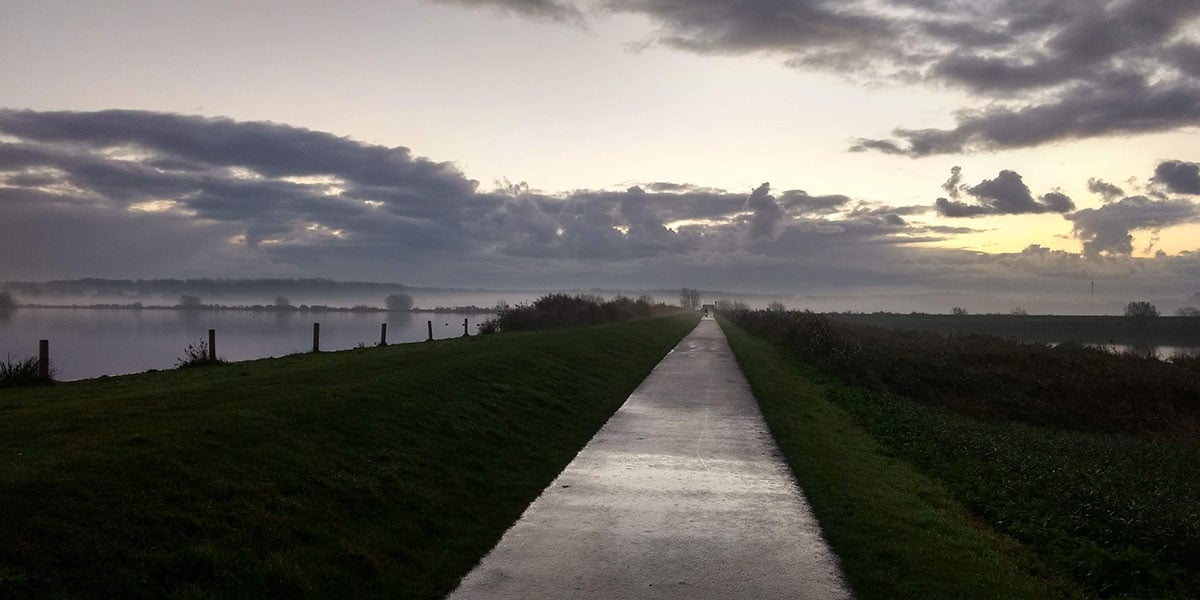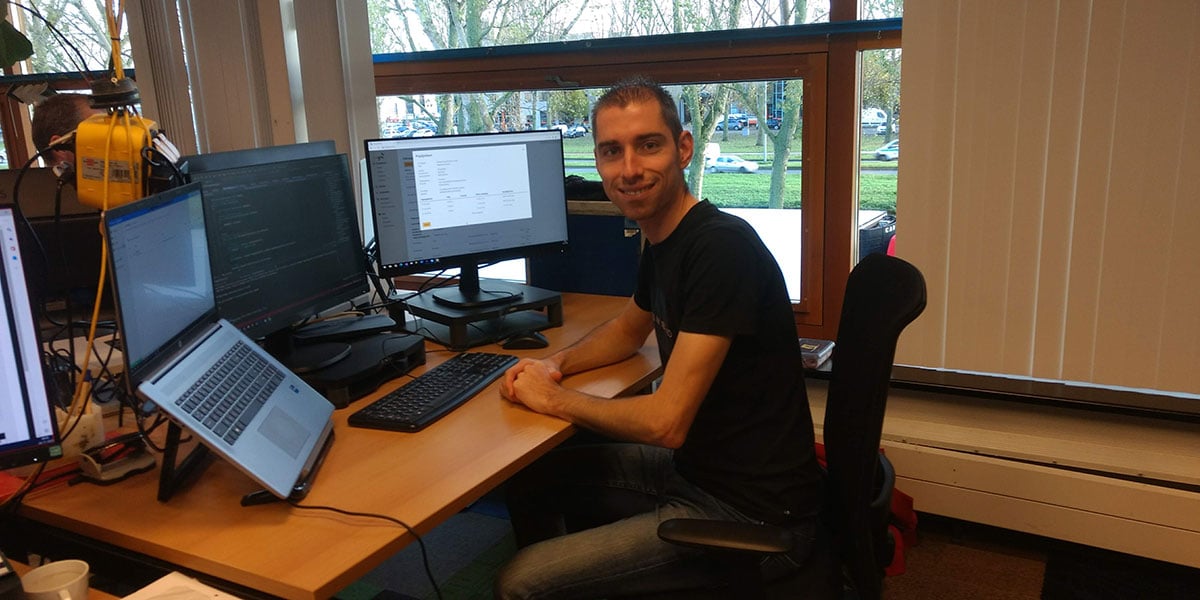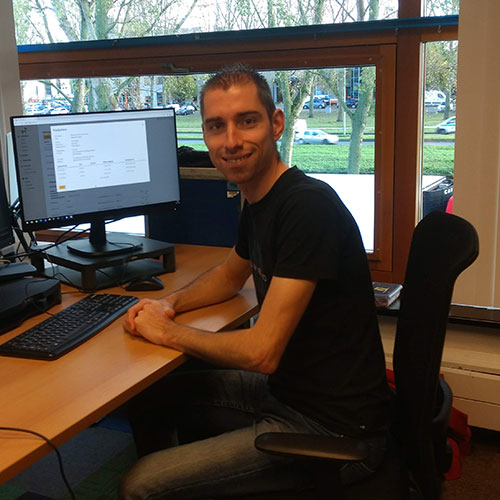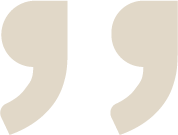Ambitious professionals work at Milgro who work on our sustainable mission every day. What does it mean to work for a purpose organization? And how does this mission find its way into everyday life? We asked several colleagues to describe a day at Milgro.
Today it is Richard Faessen's turn. He is a .NET Developer (part of the ICT team) and is responsible for the continuity of our internal and external applications. He is involved in developing and implementing applications and software.
Start of the day
It's Monday morning, time to get out of bed and start the day. I prepare breakfast for my girlfriend and kids and pack all the bags. For me, a day is not complete until there is good food, so I grab my fresh-cut salad with kidney beans and feta from the fridge and put it in my bike bag along with a pack of oat milk and my laptop. Biking has the advantage of getting plenty of exercise, getting fresh air and being environmentally friendly.
The thirteen-kilometer road I travel goes through the beautiful Broekpolder with cows in the meadows and many birds in the woods, then on a wide bike path along the tramway through Vlaardingen and Schiedam. Once I'm out of Schiedam and cycling under the railroad tracks, I'm almost there. Time for our daily standup in the ICT room. We discuss the status of everyone's work and see if there's anything else we can help each other with.

Software quality assurance
After the standup, I open the project I am working on and think about how to automatically test my built functionalities. This ensures a piece of software quality. Every time a change is made, all automatic tests are run on a server and checked that all functionalities still work. Should a particular change break something else, this will come to light in time. I am asked by my colleague Allard if I would like to review his code change. I can do that right now. By reviewing each other's code changes, we learn from each other and can also indicate that something could be better implemented in a different way. Or we can take out another bug. If everything is satisfactory, we approve the proposal and the changes are automatically pushed to our staging environment, where colleagues from other departments can also test on them. If a key user from the relevant department has tested and approved the change, then the change is pushed to production in the next release.
Mapping out software needs
It's time for a consultation with Daniëlle from Outsourcing Department. I am working on a large project, which includes a complete overhaul of the procurement price list. During the meeting, Daniëlle explains which actions in her work take a lot of time and have to be performed repeatedly. Many of these actions are quite error-prone and if errors come to light later, they have to be corrected and cost even more time. She also explains how she wants it to work in the new application, to save a lot of time and be able to make fewer mistakes. Together we think out a new design for part of the new application. Next time we will discuss this with our product owner Karlijn. In software development it is important to communicate well with the (future) users. This prevents new software from not being to their liking and/or having to be partly rewritten.

Lunchbreak
It's already break time, so I put on my coat and go outside for a while. Often there are colleagues who join me. When I get back, it's time for my salad. I also sometimes take soup, Thai curry or an omelet with me that I heat that up in a pan. It's great to eat warm, preferably three times a day.
Adding new functionality
Time to pick up the thread. It's time to add a new functionality. I had already created a table where all price list items are visible and where you can also search/filter by column. Now I'm going to make sure that a table line will expand when you click on it and display additional information. For that, I need Google. I take stock of what options there are for unfolding components in a user interface. Then I figure out which way best suits my functionality. Then I just try some out. It takes some additional Google searches to find the right code and settings, but then I finally succeed in making a table line expand.
The next step is to retrieve the correct information from the database and display it on the screen. After my component shows the correct information, I look to see if I can make the user interface a little nicer. Sometimes enlarging or shrinking a margin of a piece of text can be just the finishing touch. Also on the back end, in the code, I look to see if things can be made a little neater. Maybe code can be reused, so that the same thing isn't done two or three times. This is called refactoring. Sometimes code can even go away because it has become redundant. The trick is to make the code read like a book, because you also read programming code much more often than you write it.
When I am satisfied, I commit my changes and offer them for review. I ask my colleague Allard if he would like to review the changes and if he might have any areas for improvement.

End of the day
The work day is over and I pack up my things again. On my bike and back home. I enjoy when both my children fly around my neck when I get home. And it just so happens that dinner is on the table!
Actively contributing to sustainability
For years, sustainability has played an important role in my life. Together with my girlfriend and children we separate our waste as much as possible, we only take the car when there is no other way (we also do our shopping by bike), we make a lot of use of Marktplaats and thrift stores, and when I make a hatch for the attic, for example, I first look at what wood I have lying around. Or maybe the neighbor has something lying around that I can use. Milgro was the opportunity for me to also actively contribute to sustainability on a larger scale during my work.
Stay informed
Want to know more about working at Milgro? Check out our career page with recent job openings. Or follow us on LinkedIn











